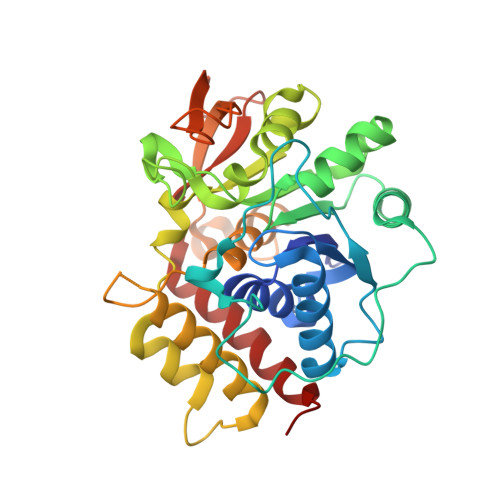Structure-Function Insights into the Dual Role in Nucleobase and Nicotinamide Metabolism and a Possible Use in Cancer Gene Therapy of the URH1p Riboside Hydrolase.
Carriles, A.A., Muzzolini, L., Minici, C., Tornaghi, P., Patrone, M., Degano, M.(2024) Int J Mol Sci 25
- PubMed: 39000137
- DOI: https://doi.org/10.3390/ijms25137032
- Primary Citation of Related Structures:
8RIH - PubMed Abstract:
The URH1p enzyme from the yeast Saccharomyces cerevisiae has gained significant interest due to its role in nitrogenous base metabolism, particularly involving uracil and nicotinamide salvage. Indeed, URH1p was initially classified as a nucleoside hydrolase (NH) with a pronounced preference for uridine substrate but was later shown to also participate in a Preiss-Handler-dependent pathway for recycling of both endogenous and exogenous nicotinamide riboside (NR) towards NAD+ synthesis. Here, we present the detailed enzymatic and structural characterisation of the yeast URH1p enzyme, a member of the group I NH family of enzymes. We show that the URH1p has similar catalytic efficiencies for hydrolysis of NR and uridine, advocating a dual role of the enzyme in both NAD + synthesis and nucleobase salvage. We demonstrate that URH1p has a monomeric structure that is unprecedented for members of the NH homology group I, showing that oligomerisation is not strictly required for the N-ribosidic activity in this family of enzymes. The size, thermal stability and activity of URH1p towards the synthetic substrate 5-fluoruridine, a riboside precursor of the antitumoral drug 5-fluorouracil, make the enzyme an attractive tool to be employed in gene-directed enzyme-prodrug activation therapy against solid tumours.
Organizational Affiliation:
Biocrystallography Group, IRCCS San Raffaele Scientific Institute, Via Olgettina 60, 20132 Milano, Italy.





















